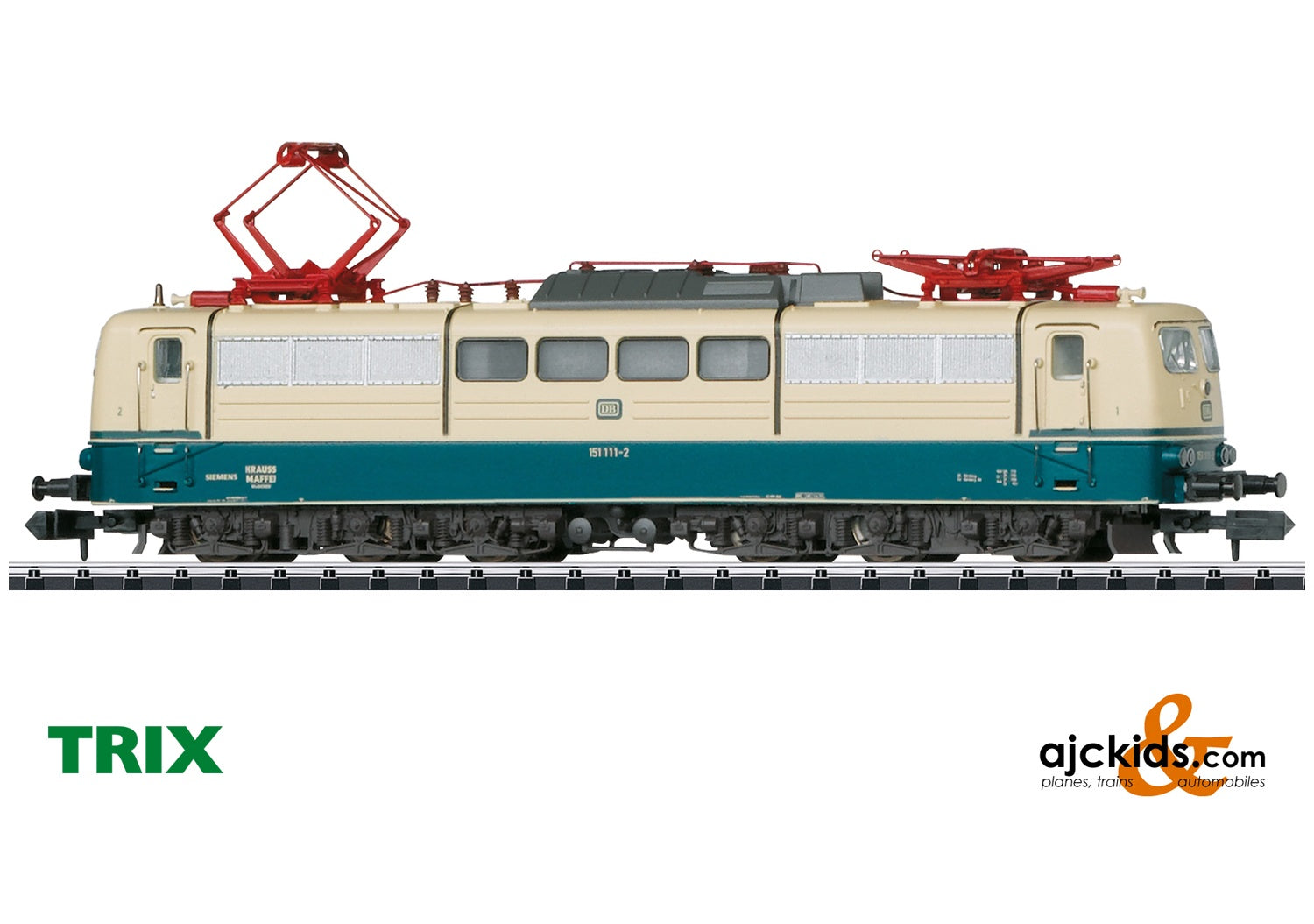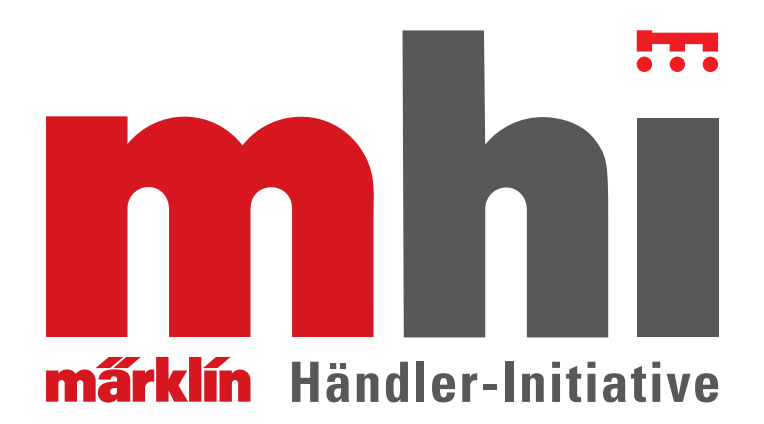Trix 16496 - Class 151 electric locomotive
Highlights
- Many sound functions.
- Warm white LEDs for lighting.
- Cab lighting.
- Headlights can be turned off.
Product description
Model: The locomotive has a built-in digital decoder and a sound generator for operation with mfx and DCC. The motor has a flywheel. 4 axles powered. Traction tires. The triple headlights and dual red marker lights change over with the direction of travel and warm white LEDs are used for the lighting. These lights and the cab lighting can be controlled in digital operation. The locomotive has a close coupler mechanism. The headlights and marker lights change over with the direction of travel and work in analog operation.
Length over the buffers 122 mm / 4-13/16".
One-time series.
Publications
- New items brochure Minitrix 2021Prototype information
T16492 – The Class 151 Electric Locomotive Due to increasing performance requirements in heavy and fast freight service the class 151 appeared in 1972 as a further development of the 150 (until 1968: E 50). Its design was based on the new parameters from the Railroad Construction and Operation System (EBO) of 1967, which provided for freight service speeds up to 120 km/h / 75 mph and trainloads up to 2,000 metric tons. These values could only be achieved with a locomotive of over 5,000 kilowatts / 6,705 horsepower performance so that just reworking the class 150 was out of the question right from the start. Krupp and AEG were responsible for the design of the 151.
In the interest of standardization, use was made of the proven traction motors for the classes 110 and 140. However, entirely new methods of insulation and heat dissipation had to be developed for the desired increase in performance. Despite this the locomotive became so heavy with the unavoidable new more powerful main transformer and the reinforced electric resistance brakes that the required axle load could be maintained only with extreme application of lightweight construction technology. The cabs were equipped with anatomically correct seats and air conditioning based on the latest information. Equipping the locomotives with energy-absorbing buffer beams was obligatory. The latter enabled the installation of center buffer couplers. The proven trucks from the 150 were discarded and new, welded lightweight steel trucks were designed. The class 103 provided box-style bracing and the wheel guide mechanism with Lemniskaten steering linkage. The proven rubber ring spring drive was preserved. A 29-step high voltage relay system with thyristor load relays provided control for the traction motor voltage. Road number 151 001 was delivered as the first unit on November 21, 1972. By 1977, 170 units were delivered by Krupp, Henschel, Krauss-Maffei, AEG, Siemens, and BBC. They were initially used all over West Germany and in part even with passenger trains. Road numbers 151 089-122 had and some still have today an automatic coupler ("Unicoupler"). For many years, they ran mostly as double units in m.u. operation pulling heavy ore trains in the routings Hamburg – Beddingen (5,700 metric tons), Venlo – Dillingen (5,130 metric tons) and Moers – Linz (3,220 metric tons). Up to 2009 only locomotives involved in accidents were retired. After this, so many units were stored because of the economic and financial crisis that the roster of six-axle locomotives still active in the last four years sank in 2019 to eight units with automatic couplers. Yet the class 151 locomotives found a new field of activity among private firms such as the Bavarian Railroad (5 units), EGP (6 units), Hector Rail (10 units), HSL (3 units), Lokomotion (4 units), Saar Rail (2 units), and SRI (4 units).
Features
Warning
| DCC | SX2 | SX | MFX | |
|---|---|---|---|---|
| Headlight(s) | X | X | ||
| Locomotive whistle | X | X | ||
| Electric locomotive op. sounds | X | X | ||
| Engineer’s cab lighting | X | X | ||
| Direct control | X | X | ||
| Sound of squealing brakes off | X | X | ||
| Rear Headlights off | X | X | ||
| Whistle for switching maneuver | X | X | ||
| Front Headlights off | X | X | ||
| Station Announcements | X | X | ||
| Conductor's Whistle | X | X | ||
| Compressor | X | X | ||
| Blower motors | X | X | ||
| Letting off Air | X | X | ||
| Operating sounds | X | X | ||
| Special sound function | X | X | ||
| Doors Closing | X | X | ||
| Station Announcements | X | X | ||
| Cab Radio | X | X | ||
| Sound of Couplers Engaging | X | X | ||
| Operating Sounds 1 | X | X | ||
| Sanding | X | X |
EAN/UPC: 4028106164965



